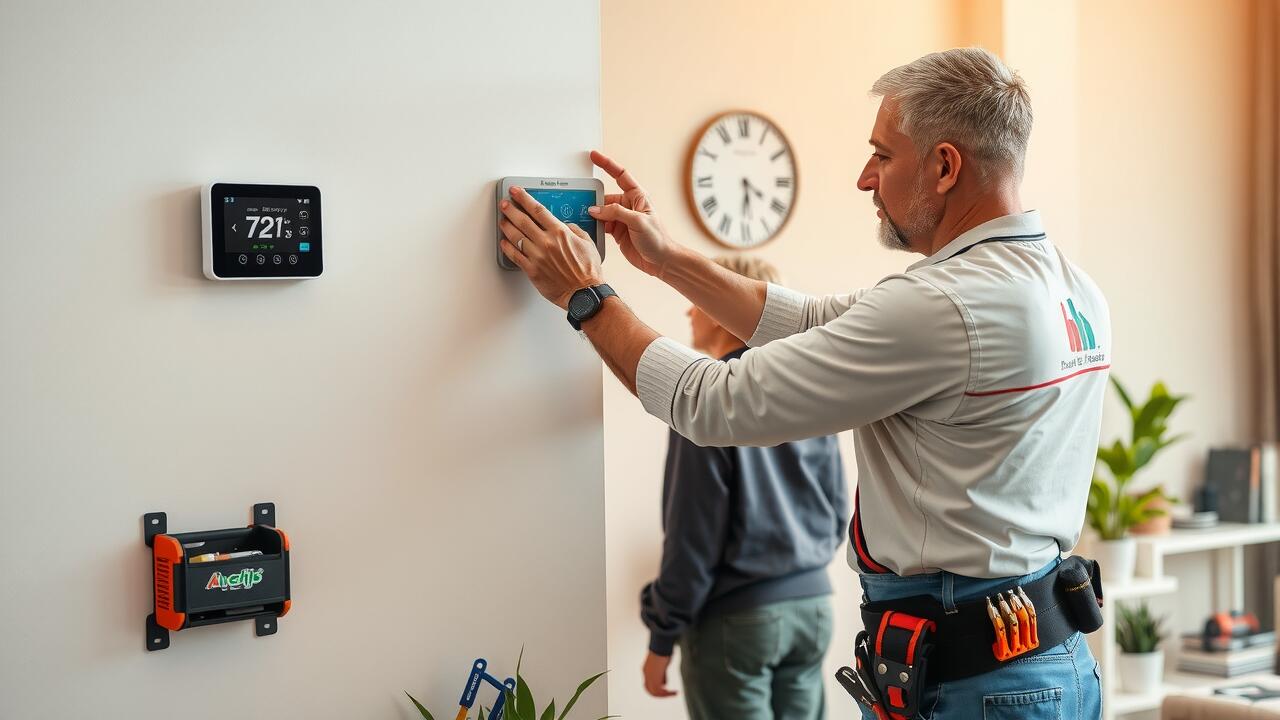
Seasonal Variations in Installation Prices
The cost of thermostat installation often fluctuates with the seasons. In colder months, demand for heating systems increases. This surge can lead to higher installation prices due to contractor availability and workload. Conversely, during warmer months, when air conditioning becomes a priority, homeowners may notice a similar increase in costs for installing cooling systems.
Weather conditions also influence the timing of installation projects. Mild temperatures tend to encourage more homeowners to schedule installations, creating an uptick in demand. This seasonal variation impacts not only service availability but also pricing structures among contractors. Understanding these dynamics can help homeowners budget appropriately for Thermostat Installation and Repair.
Demand Fluctuations
The demand for thermostat installation can significantly fluctuate throughout the year. Typically, the busiest seasons are late spring and early fall when homeowners prepare for summer cooling and winter heating. This increase in demand can lead to higher installation prices as contractors face a backlog of requests. Consequently, scheduling might become more challenging during these peak times, causing homeowners to wait longer for service.
In contrast, there may be periods during the off-season when demand decreases. This reduction in requests can result in lower installation costs, as contractors may be more eager to fill their schedules. Homeowners looking to save on Thermostat Installation and Repair may find favorable pricing outside of peak periods. Understanding these fluctuations can help individuals better plan their installation needs and budget accordingly.
Common Brands and Their Pricing
A variety of brands dominate the thermostat market, each with unique features and price ranges. Nest and Ecobee are among the most popular options for smart thermostats, often costing between $100 to $300, depending on the model and capabilities. Honeywell, known for its traditional models, typically offers products in the $50 to $150 range. When considering Thermostat Installation and Repair, it's essential to factor in both the brand's reputation and the specific model's features, as this can influence the overall costs.
In addition to the upfront price of the thermostat itself, installation costs can vary based on the brand's complexity and the features offered. A basic Honeywell model may require less time and expertise to install compared to a high-tech Ecobee system, which may need additional setup for its smart features. Customers should also keep in mind that installation services can differ by provider, adding another layer to the total expected expense for Thermostat Installation and Repair.
Brand Reputation
Brand reputation plays a significant role in determining the pricing for thermostat installation. Well-known brands tend to command higher prices due to their established reliability and customer trust. Homeowners often feel more at ease investing in products from manufacturers with positive reviews and proven track records. These brands may also offer better warranties and customer support, which adds to their appeal.
On the other hand, lesser-known brands might offer more competitive pricing for thermostat installation and repair. While they can provide various features, their lack of widespread recognition may lead some customers to question their quality and reliability. It’s essential to weigh the potential savings against the risks of opting for a less reputable brand. This decision can greatly influence both the initial investment and long-term satisfaction with the thermostat system.
Hidden Costs in Thermostat Installation
When considering Thermostat Installation and Repair, homeowners often overlook potential hidden costs that can impact the overall budget. While the quoted price might seem reasonable, additional expenses may arise during the installation process. For instance, if existing wiring is outdated or incompatible with the new thermostat, an electrician might need to make modifications. This can lead to increased labor costs and additional materials that were not initially accounted for.
Permits and inspections can also contribute to unforeseen expenses in the installation process. Depending on local regulations, a permit might be required for the installation of certain thermostat models, particularly if they include advanced functions or are part of a larger HVAC system upgrade. Inspections conducted post-installation might also incur fees, adding another layer of cost to the project. Being aware of these factors can help homeowners prepare and budget more effectively for Thermostat Installation and Repair.
Permits and Inspections
When installing a thermostat, it is crucial to understand that permits and inspections may be required depending on your local regulations. Many municipalities mandate permits for electrical work to ensure safety and compliance with building codes. This requirement can add extra time and cost to your overall project, so it's important to check with your local authorities before proceeding with thermostat installation and repair.
Inspections may also be necessary to verify that the installation meets safety standards. An inspector will typically review the installation to confirm that everything is up to code. While this step might seem like an inconvenience, it ultimately ensures your system operates safely and efficiently. Being aware of these factors can help you better budget for your thermostat installation and repair.
FAQS
What is the average cost to install a thermostat?
The average cost to install a thermostat typically ranges from $100 to $300, depending on the type of thermostat and the complexity of the installation.
Are there additional costs associated with thermostat installation?
Yes, additional costs may include permits, inspections, or any necessary electrical work that might be required to support the new thermostat.
Does the brand of thermostat affect installation prices?
Yes, different brands come with varying installation requirements and complexities, which can influence the overall cost of installation.
How can seasonal demand impact installation costs?
During peak seasons, such as summer or winter when heating and cooling systems are most in demand, installation costs may increase due to higher demand for HVAC services.
Do I need a professional to install a thermostat, or can I do it myself?
While some thermostats can be installed by homeowners with basic DIY skills, it is often advisable to hire a professional to ensure proper installation and avoid potential issues.
